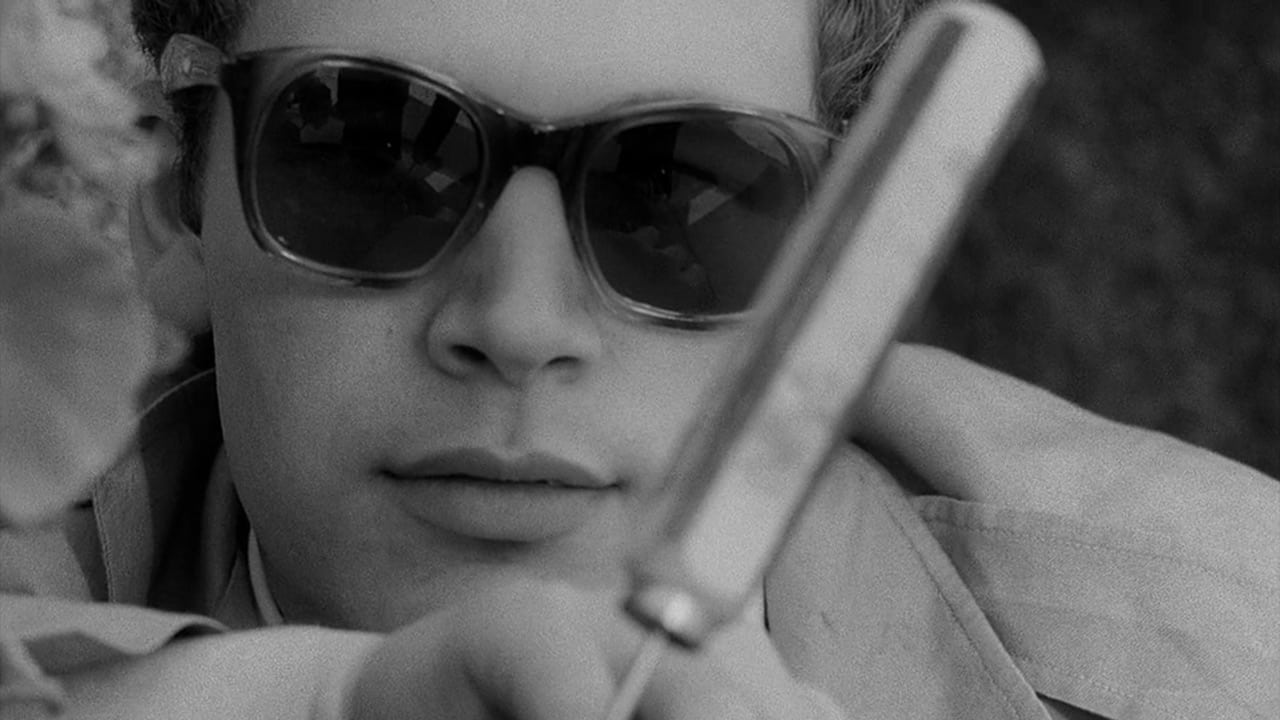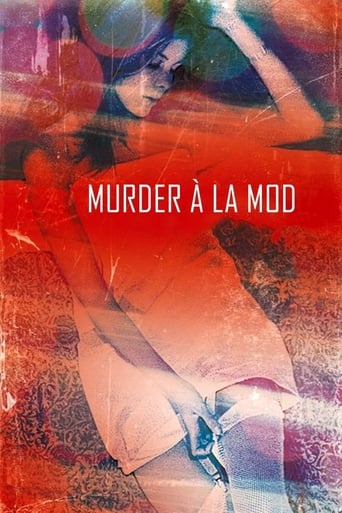

Highly Overrated But Still Good
... View MoreA bit overrated, but still an amazing film
... View MoreThe movie is made so realistic it has a lot of that WoW feeling at the right moments and never tooo over the top. the suspense is done so well and the emotion is felt. Very well put together with the music and all.
... View MoreThis is a dark and sometimes deeply uncomfortable drama
... View MoreNaive young lady Karen (a sweet and appealing performance by the pretty Margo Norton) wants to help her struggling filmmaker boyfriend Christopher (excellently played by Jared Martin) raise money so he can divorce his wife. Meanwhile, jolly psycho prankster Otto (a gloriously unhinged portrayal by William Finley) stalks the building where Christopher is shooting a low-grade adult feature in order to keep himself afloat. Writer/director Brian De Palma concocts an offbeat and interesting avant-garde meditation on the elastic medium of film that addresses such compelling themes as art vs. commerce, voyeurism, and illusion vs. reality. Moreover, De Palma loads this film with a wealth of inspired stylistic flourishes: snappy jump cuts, dynamic hand-held camera-work, freeze frames, double exposure, artificially sped-up film, and an elliptical narrative that depicts an icepick murder from three different perspectives. The amusing sense of irreverent humor and De Palma's obvious delight with playing around with cinema's boundless possibilities keep things fairly light and breezy until the truly jarring conclusion. Better yet, this picture pokes wickedly hilarious fun at the seedy and shameless "just give 'em what they want" mentality of the crassly pandering exploitation movie industry while offering a neat and illuminating peak at same. Bruce Torbet's crisp black and white cinematography gives the film an impressively handsome look. Both John Herbert McDowell's zany score and the groovy theme song hit the swinging spot. Well worth a look for De Palma fans.
... View MoreIsn't it strangely fascinating how a talented and visionary filmmaker will always distinguish him/herself from the others, regardless of how ridiculously little financial means he/she has to work with? "Murder à la Mod" got released on the Something Weird label in America and on similar Grindhouse-type of DVD label here in the Dutch speaking countries, but it's almost too good to get associated with the usual stuff these labels throw on the market. Numerous of the Something Weird films were made by young and aspiring directors with lots of ambition and occasionally even some good ideas, but without any money or professional cast and crew members, and that is why they usually look poor and sleazy instead of good. But with his debut Brian De Palma proves that blaming the lack of budget is all too easy. With an intriguing narrative structure, eccentric character drawings and ingenious visual gimmicks, De Palma neatly camouflages the lack of funds and even the complete absence of story! Also, the director's later obsession with the work of Alfred Hitchcock is already noticeable here, through a variation of subtle references and downright open homages. The plot, revolving on a young girl falling for an amateur filmmaker with dubious and questionable intentions, is actually of minor importance. The slightly psychedelic atmosphere, the irresistible title song and the crazed characters (William Finley is superb as Otto) keep the film entertaining even if the screenplay ceases to make sense. Particularly the extended sub plot where one event is shown from three different perspectives is very accurately done and undeniably far ahead of its time. Obviously, De Palma's first born also suffers from copious defects, like dreadfully boring padding scenes (the conversation between Tracey and her bank manager oh my God!) and a confusingly abrupt ending.
... View MoreBrian De Palma would go on to become the number one Hitchcock imitator with the release of films such as Sisters, Body Double and Dressed to Kill. It's his style that he is most famous for; so as you would expect, his first feature is absolutely full of style and various experiments...the result is a mixed bag really. First of all, the stylish flourishes and experiments are all at the expense of the story, although some of it is interesting to watch. The plot itself focuses on a maker of very strange films and a girl who falls in love with him. The plot is clearly not the most important thing about the film, however, and really nothing in it makes a great deal of sense. The picture is a stark black and white and this gives the film a distinctive look which is to its credit. The majority of the movie is taken up by sequences that see the film's pivotal event (an ice pick murder) from the perspective of several different characters. I would not really say that this film is entertaining or even fun to watch really; but it is interesting to see the film that De Palma made before he got famous and the film is worth seeing for that reason.
... View MoreIt's something refreshing to the mind of a movie buff when we come across a filmmaker who doesn't change all that much during a career, but keeps making himself seem fresh, if that makes sense. Brian De Palma, for better or worse (and he's had both), is a filmmaker who hasn't changed a whole lot in forty years, at least where some of his central concerns meet. Take the opening scene, where a director is holding a screen test for a few girls, telling them to take off their clothes. This is also seen later on in The Black Dahlia where a director auditions Elizabeth Smart (in both I believe might be voiced uncredited by De Palma himself). Right from here there's no mistaking, even in just a simple one shot, how much he loves the act of watching, the technical, plastic aspect of it, the movement of a camera, frame speeds and the possibilities in even satirizing the process of film-making and voyeurism.Muder a la Mod is possibly his first feature, and it's certainly not technically perfect, or even very accomplished in the sense that his films of the 80s look (storyboarding, as he said he did for films like Dressed to Kill and The Untouchables). But I would much rather watch a work like this, which has a lot of invention and off-the-wall comedy and unpredictability, than one of his more recent bloated studio productions. And the story is gleefully ripped off the pages of quarter-cent paperbacks and given the De Palma twist: Karen is in love with Christopher, who is a freelance photographer and aspiring filmmaker, but she doesn't quite understand why he wants her to leave when she stops in one day as he watches dailies. Turns out he's making this film, a skin-flick, so that he can get a divorce from his wife. But there's more: a leering, merry/psycho prankster named Otto is stalking around the building doing this and that, holding not one but two ice-picks (one fake and one real, as little title-arrows direct us to at one point), and as Karen's friend waits outside for her a murder occurs, with bizarre circumstances.The twist to this, aside from seeing De Palma mess with the speed of film and timing and framing and cutting and this and that with lighting and going between Gothic horror and silent slapstick (in more Godard form than Hitchcock as one also saw in Greetings and Hi, Mom!) is that De Palma adds the touches of dark comedy that one associates with him, and that he can do well when working without a net. He jumps around, for example, in the middle of what should be a simple exposition scene between Karen and Tracy (not bad though not quite "good" actresses Norton and Akers), where the script seems to be presented in tact, just no in the usual 180-degree kind of structure of a scene. It's an uneasy feeling at first, but it's nevertheless captivating, and this attitude continues throughout, as though De Palma knew he had nothing to lose but his creative freedom on limited resources. I'm even reminded of Kubrick's two early films, Killer's Kiss and the Killing, by featuring a freewheeling, guerrilla-style take on New York City, and a the triple-back structure of the narrative in regards to the Killing.As I said, it's not exactly great shakes as a film, but it's flaws are mostly due to budget and, as expected, not having the best cast members (my least favorite scene involved a bank manager who gave Tracy a tough time in receiving her "ice", not simply because the bank actor but the scene goes too long). Though as in other cases, De Palma has a wild card in one of the great unsung character actors: William Finley. This is a strange, creepy man, who apparently can make some music as well as go about like some demented clown (he wrote and performed the title track). His character Otto is a little like his character in Sisters crossed with his character in Black Dahlia (the latter the one pleasant surprise in that film aside from the screen test bit); he has these two ice picks, and at first looks like a very sinister character, the "obvious" one to do the work of being the murderer, and as well carrying along a fresh corpse in that trunk. But De Palma's double back to him in the story is the most entertaining: he doesn't speak, but his thoughts are jumbled like out of a Frank Zappa record, and as he ascends stairs he sprints and the camera jubilantly follows quickly. In his first role, in the first De Palma movie, he makes his mark well.
... View More